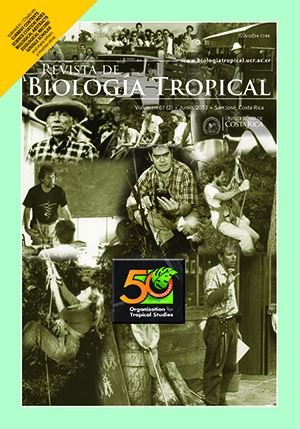Abstract
Common snook Centropomus unidecimalis is an important commercial and fishery species in Southern Mexico, however the high exploitation rates have resulted in a strong reduction of its abundances. Since, the information about its population structure is scarce, the objective of the present research was to determine and compare the age structure in four important fishery sites. For this, age and growth of common snook were determined from specimens collected monthly, from July 2006 to March 2008, from two coastal (Barra Bosque and Barra San Pedro) and two riverine (San Pedro and Tres Brazos) commercial fishery sites in Tabasco, Mexico. Age was determined using sectioned saggitae otoliths and data analyzed by von Bertalanffy and Levenberg-Marquardt among others. Estimated ages ranged from 2 to 17 years. Monthly patterns of marginal increment formation and the percentage of otoliths with opaque rings on the outer edge demonstrated that a single annulus was formed each year. The von Bertalanffy parameters were calculated for males and females using linear adjustment and the non-linear method of Levenberg-Marquardt. The von Bertalanffy growth equations were FLt=109.21(1-e-0.21(t+0.57)) for Barra Bosque, FLt=94.56(1-e-0.27(t+0.48)) for Barra San Pedro, FLt=97.15(1-e-0.17(t+1.32)) for San Pedro and FLt=83.77(1-e-0.26(t+0.49)) for Tres Brazos. According to (Hotelling’s T2, p<0.05) test growth was significantly greater for females than for males. Based on the Chen test, von Bertalanffy growth curves were different among the study sites (RSS, p<0.05). Based on the observed differences in growth parameters among sampling sites (coastal and riverine environments) future research need to be conducted on migration and population genetics, in order to delineate the stock structure of this population and support management programs.##plugins.facebook.comentarios##
Downloads
Download data is not yet available.






